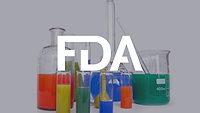Baby Food Company First in U.S. to Set EU-Aligned Safety Standards, Share Test Results for Contaminants

Image credit: Freepik
Marking the first time a U.S. baby food producer has made such a promise, company Little Spoon has launched a new transparency initiative called “Little Spoon, Big Change,” which commits the company to strict, EU-aligned food safety standards for toxic heavy metals, pesticides, and plasticizers. The company says it will never sell product that exceeds strict limits for more than 500 chemical contaminants of concern, and that testing results for its products will be made publicly available on its website.
Little Spoon states that it is the only company in the U.S. baby food sector to voluntarily set and verify such rigorous, transparent safety standards, and has called upon the rest of the industry to follow suit. "We won't see large-scale changes until companies like Little Spoon take action," said Bruce Lanphear, M.D., M.P.H., a researcher of childhood exposure to toxins who serves as a scientific advisor to Little Spoon. “Companies don't need to wait for regulations—they can lead the charge.”
Little Spoon, Big Change Transparency Initiative
Little Spoon launched its new transparency initiative in light of the lacking regulation of chemical contaminants in baby foods in the U.S., and in response to national consumer mistrust of and concern around baby food safety. In collaboration with Talker Research, Little Spoon conducted a survey of 2,000 parents across the country to assess their attitudes about baby food safety, finding that 95 percent of parents believe baby food brands should be doing more to address baby food safety concerns—and that only 9 percent report a “high degree” of trust in baby food companies.
In response to this mistrust, and in alignment with its stated belief that it is a “fundamental responsibility for industry” to ensure the highest standards of baby food safety, Little Spoon will begin testing and sharing results for every batch of baby food for more than 500 contaminants, including heavy metals, pesticides, and plasticizers. With no current federal regulations set to limit the levels of chemical contaminants in baby food in the U.S., the company has aligned its testing standards for heavy metals with those mandated in the EU.
Consumers will be able to view exact testing limits for each contaminant in all Little Spoon Babyblend products through a dashboard on www.littlespoon.com, alongside detailed ingredient sourcing information, with plans to roll out additional transparency measures for its product portfolio in the upcoming months. The company will also launch an AI-powered chatbot on its site to provide education for parents and answer questions about baby food safety.
U.S. Regulation of Chemical Contaminants in Baby Foods
At present, no explicit, legally enforceable limits for the vast majority of toxic heavy metals and chemical contaminants in baby foods exist in the U.S. At most, the U.S. Food and Drug Administration (FDA’s) Closer to Zero initiative—which aims to reduce dietary exposure to metals like arsenic, cadmium, mercury, and lead—has resulted in the agency setting an action level of 10 parts per billion (ppb) for inorganic arsenic in apple juice.
FDA has proposed or is considering other action levels for lead, arsenic, cadmium, and mercury for foods intended for babies and young children, but these levels have yet to be finalized. Action levels reflect levels at which FDA may regard a food as “adulterated” under the Federal Food, Drug, and Cosmetic Act; however, action levels are only a non-binding regulatory tool that the agency may consider, in addition to other information, when deciding whether to bring enforcement action (e.g., working with a manufacturer to remove a food from the market) against a product determined to be unsafe.
“The standards for children’s food in the U.S. are maddeningly low. Parents deserve better, and we are doing our part to finally deliver what they deserve,” said Ben Lewis, Little Spoon co-founder and CEO.
An article published in the August/September 2023 issue of Food Safety Magazine, which can be read here, discusses the evolving landscape of heavy metals regulation in the U.S., driven by growing consumer concern.
A History of Consumer Concern and Baby Food Safety Incidents in the U.S.
In 2023, in support of FDA’s Closer to Zero Initiative, a Michigan State University study found that children aged 6–24 months and 24–60 months are the U.S. populations most highly exposed to cadmium, with concerning levels of exposure when compared to guidelines set by regulatory agencies. This study is not an isolated piece of research, with high-profile watchdog groups conducting their own testing projects that have heightened public concern about toxic heavy metals and other chemicals in foods regularly consumed by children and babies:
- Consumer Reports found that, from 2018 to 2023, the overall health risk to babies from metals in baby foods has not meaningfully reduced, with declines in certain heavy metals in some foods being offset by increases in others
- In 2024, Consumer Reports raised alarm bells over the presence of perchlorate—a chemical used in rocket fuel, missiles, explosives, airbags, and some plastics—in children’s foods
- In a 2023 analysis, the Environmental Working Group commissioned an independent, accredited laboratory to conduct tests on 14 oat-based products popularly eaten by young children, and found unsafe levels of pesticide chlormequat in many of the foods.
Testing results aside, recent food safety incidents affecting U.S. public health have validated worries about baby food safety. As discussed in the cover story from the August/September 2024 issue of Food Safety Magazine, cinnamon applesauce pouches contaminated with exceptionally high levels of lead poisoned hundreds of children across the U.S. in late 2023, pointing to vulnerabilities in the processes ensuring national food safety.
Looking for a reprint of this article?
From high-res PDFs to custom plaques, order your copy today!






